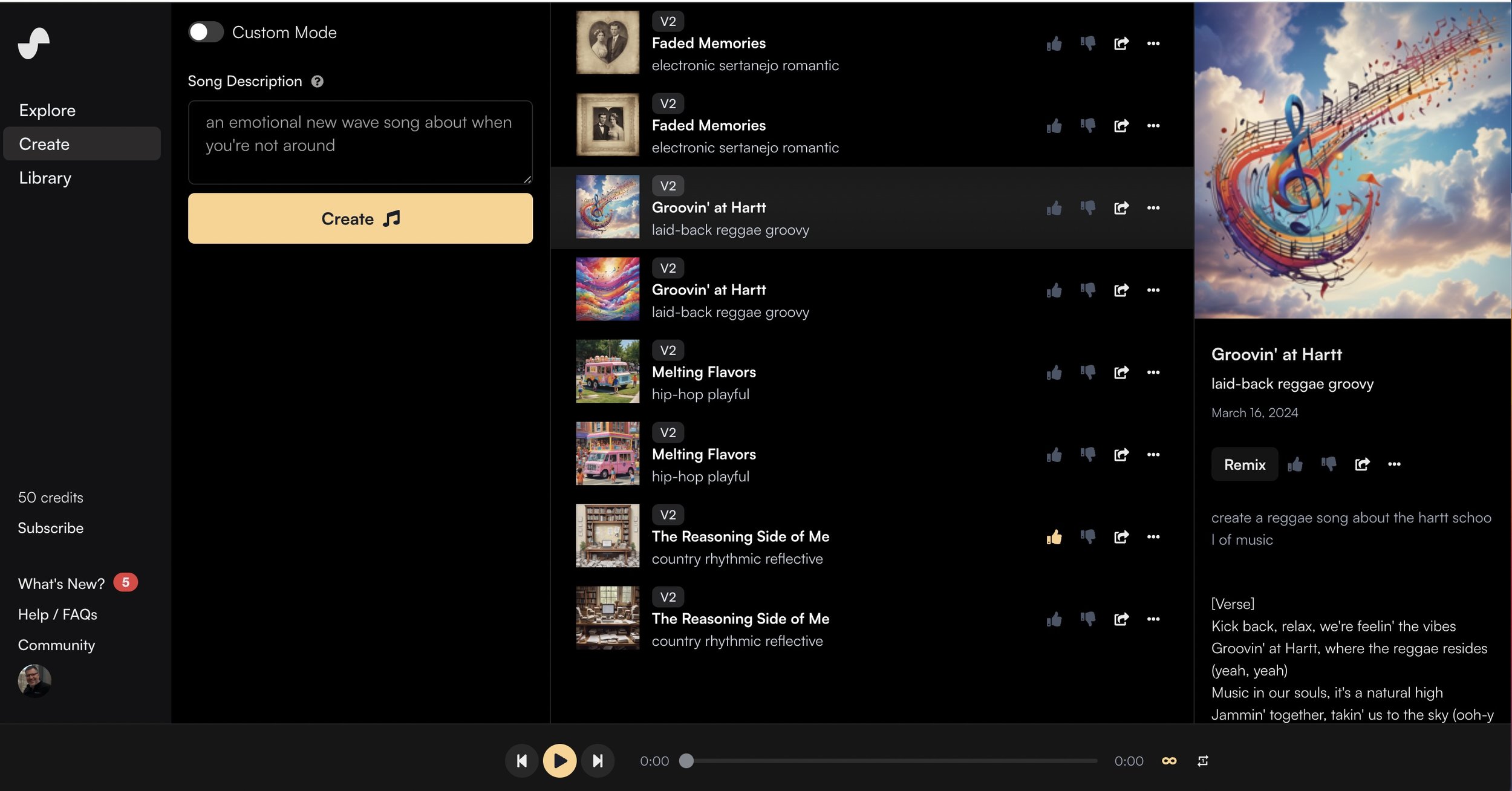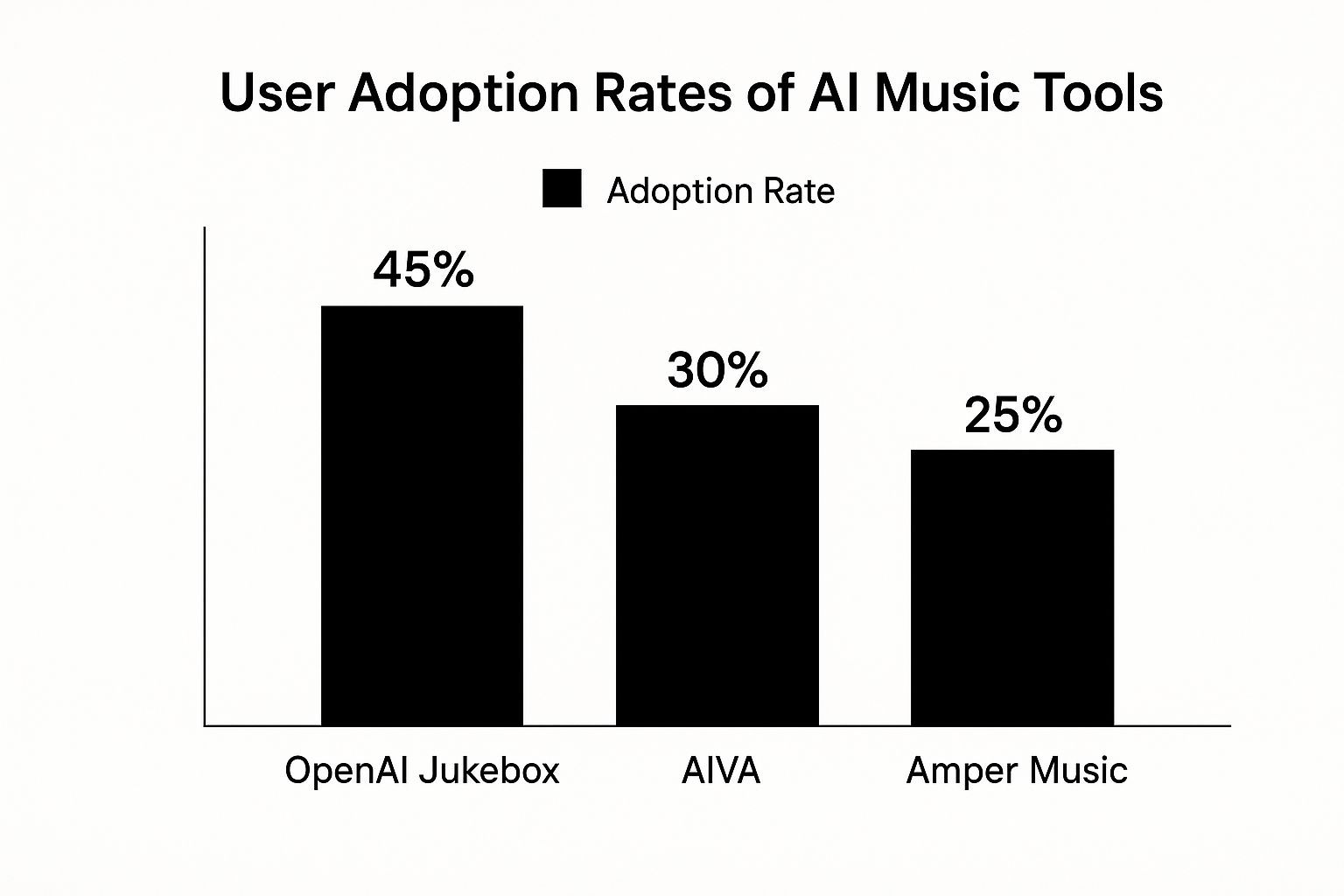Suno AI: Revolutionizing Music Creation with Artificial Intelligence
Imagine a world where anyone can become a composer without ever picking up an instrument. Where a simple text prompt turns into a full-fledged song complete with vocals, melody, and rhythm in mere seconds. In the era of AI permeating every aspect of life, Suno AI stands out as a game-changer for creators, musicians, and businesses alike. As an IT and AI-focused startup, we see immense potential in tools like this for innovation—from personalized content to automating creative workflows. In this article, we'll dive deep into Suno AI: from a comprehensive overview to practical tips, pros, cons, and real-world examples. Whether you're an AI novice or a seasoned developer, there's value here for everyone.
What Is Suno AI: A Detailed Overview
Suno AI is an AI-powered platform that generates original music from text descriptions. Launched in 2023, by November 2025, it has evolved to version 5 (v5), with enhancements in track length (up to 8 minutes), lyric handling, and overall coherence. Available on suno.com and mobile apps, it uses advanced AI models to analyze prompts and produce audio tracks.
How does it work? You input a description—like "an energetic rock track about space adventures with a guitar solo"—and Suno AI creates a song up to 8 minutes long. It supports hundreds of genres, from pop and rock to classical and hip-hop. Key features include:
Custom Mode: Full control over lyrics, style, and song structure.
Instrumental Mode: Pure instrumentals without vocals.
Extend and Remix: Lengthen or remix existing tracks.
Stems Export: Split tracks into separate elements (vocals, bass, drums) for professional editing.
Covers and Style Transfer: Reimagine existing music or apply styles to uploads, including vocal covers.
Persona: Create consistent "personas" for a series of tracks.
Pricing: The free plan offers 50 credits daily (each track costs 10 credits), now defaulting to v4.5-All model, but with export limits. Pro plan (around $10/month) boosts to 500 credits, adds commercial rights, and high-quality downloads. Premier (from $30/month) provides unlimited generations for pros.

AI Tool: Suno — Dr. James Frankel
Advantages of Suno AI: Why It's a Must-Try Tool
Suno AI democratizes music creation, making it accessible to all. Here are the standout pros:
Accessibility and Ease of Use: No musical background required. Beginners can whip up a track in minutes, while experts experiment with niche genres. This saves time—weeks of composition reduced to seconds.
Creative Versatility: Supports thousands of styles, languages (including multilingual options), and moods. AI produces unique blends that might not occur to humans.
Business Efficiency: For startups like Aidrift.tech, it's ideal for crafting soundtracks for videos, podcasts, or apps. It cuts costs on royalty-free music and speeds up production.
Community and Collaboration: Share tracks, get feedback, and even monetize via integrations.
AI Innovations: By 2025, outputs are "hyper-realistic," especially in v5, rivaling human quality in demos.
Disadvantages of Suno AI: A Balanced Perspective
While innovative, Suno isn't flawless. Here's an honest look at the cons:
Legal and Ethical Concerns: Facing lawsuits from labels like RIAA over copyrighted training data, which could impact commercial use if tracks mimic hits.
Quality Variability: Vocals can sound robotic, structures predictable, or prompts ignored. Free version has lower audio quality.
Credit Limits: Free tier runs out fast; paid plans may feel pricey for casual users.
Prompt Dependency: Results hinge on prompt quality—novices struggle without practice.
Not Fully Professional: Great for ideas, but not release-ready without human tweaks.
Example: Reddit users report reggaeton tracks with mismatched accents, requiring multiple generations.
How to Use Suno AI: Practical Steps and Tips
Getting started is straightforward:
Sign Up: Head to suno.com and create an account via email or Google.
Craft a Prompt: Be specific—include genre, mood, instruments, tempo (BPM). Example: "[Genre: Pop] [Mood: Upbeat] Song about summer vacation with synthesizers and female vocals."
Generate: Hit "Create" for 2 variants. Use Extend to lengthen.
Edit and Export: In Pro, export stems and refine in tools like Audacity or GarageBand.
Integrate: Upload to video editors or social media.
Pro Tip: Leverage "Persona" for consistent series—e.g., an "80s Rock Star" for an album. Combine with ChatGPT for lyrics, then paste into Suno.
Visual Recommendation: Add an infographic outlining the song creation steps—icons for each stage, plus a sample prompt.

How to Generate Music with AI (A Practical Guide)
Real Examples of Suno AI in Action
Content Creators: A YouTuber generates a soundtrack for a travel vlog—"Relaxing chill-hop with ocean sounds." It's free and original.
Musicians: An indie artist prototypes folk demos, then refines manually. Example: "Faded Memories" in electronic serenade style.
Education: Music teachers demo song structures in real-time for students

AI firm Suno adds 'Covers' feature including full-track uploads ...
Lifehacks for Maximizing Suno AI
Optimize Prompts: Add specifics like "in the style of The Beatles" for accuracy, but avoid overload—AI can get confused.
Save Credits: Start with short clips, then extend.
Tool Combos: Pair with Midjourney for track artwork.
Stay Updated: v5 improves vocals—check changelogs on the site.
In conclusion, Suno AI is a powerhouse tool that brings music into everyday creativity.